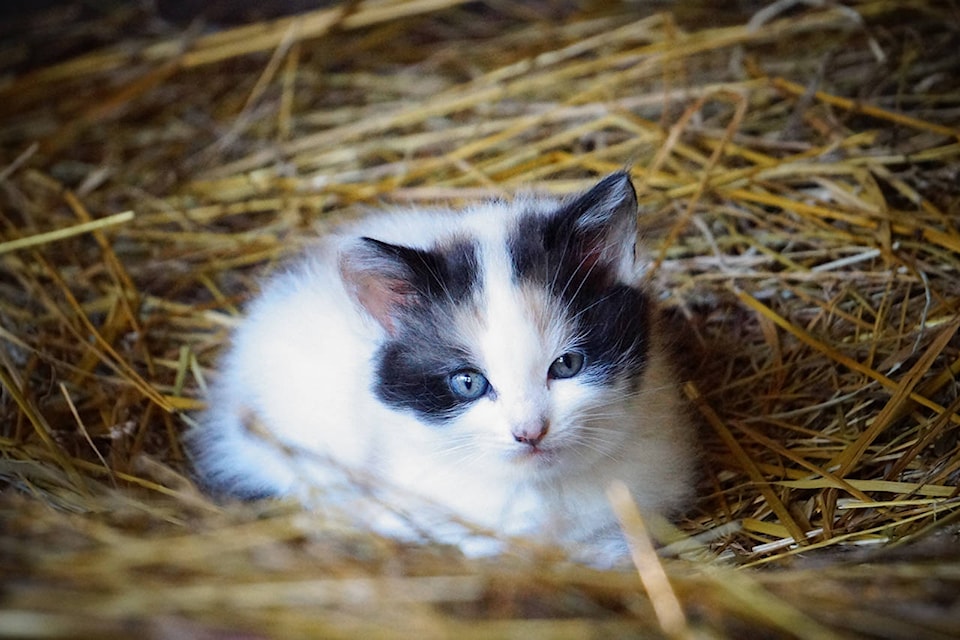The farm was filled with the sound of birds chirping at sunrise and all around me life was coming out of winter hibernation with an exuberance. The welcome weather of spring converts dawn from a chilly endurance to a time of joyful anticipation of the day.
“Darn.” I thought, scooping the kitten up and shoving it into my white lab coat pocket, which turned out to be the perfect kitten size. “This complicates things.”
Ambling towards the cow barn, I had heard the mewling from a far distance before I found the kitten. The size of a mini pop can, its bandy legs wobbling with exhaustion, head bobbing from side to side, he was yelling at the top of his tiny lungs for his mother, all the while crawling determinedly across the field, over the farm road and heading in the direction of an empty barn 100 metres the other side of the road.
Spring is the first kitten freshet of the year. It happens just when we are nearing the end of spaying and neutering the previous fall kittens. Unfortunately, not all of that fall flood get spayed, resulting in kittens going through their first or second heat cycle getting pregnant. Kittens having kittens.
RELATED: Nearly 60 feral cats caught in one B.C. neighbourhood
Doris Lessing in her book Particularly Cats and More Cats describes the horrors of the annual disposal of excess kittens in the days before spays and neuters became “routine.” Her mother would be the one to drown kittens, sack after sack. Refusing to do it one year, the house became so filled with cats that in frustration her father gathered them in one room and started shooting.
The boys clearing out the barn told me that they had disturbed a mum cat and kittens from behind some feed sacks the day before, waving in the general direction from which the kitten came. “She went over there.” I never did find the rest of the litter.
Feral cats — which means cats that do not have a home and includes barn cats — live short intense lives filled with many miserable moments. Weakened by parasites, scavenging sub-optimal diets, most die within two years of age from infectious disease, trauma, predation, exposure and starvation.
I cancelled that morning’s research so that I could get this unweaned and dehydrated kitten cared for. He brought home fleas, tapeworms, roundworms and ringworm. Too young for the vaccines available then, it took days of nursing to bring him through the severe “cat flu.” We went from constipation to diarrhea, green gummy snot that wouldn’t scrub off the walls and days of fever. Of all the kittens that flowed through my hands into new homes that spring, not all survived. This fellow’s sheer determination pulled him through.
RELATED: Money getting tight for Fraser Valley volunteer feral cat rescuers
Pocketing that kitten turned out to bring more joy than complications, though. A local veterinarian and cat rescue organization helped me, at that time an impoverished student, to pay for his veterinary care and neuter. He found his forever home with me that spring morning in South Africa, travelling with me to Canada some years later.
Spaying and neutering cats before puberty (16-20 weeks old) prevents thousands of unwanted kittens and cats suffering. Please help (and ask for help if you need). Get to know your local veterinarians and animal rescue organizations, donate, volunteer and be responsible, so that we can have healthy, safe and wanted cats in our communities.
Nicolette Joosting is a Harrison Hot Springs resident and veterinarian who has recently retired from her Vancouver Feline practice. She keeps herself busy through the Harrison Veterinary Service, her blog and by volunteering in the community.
news@ahobserver.com
Like us on Facebook and follow us on Twitter
